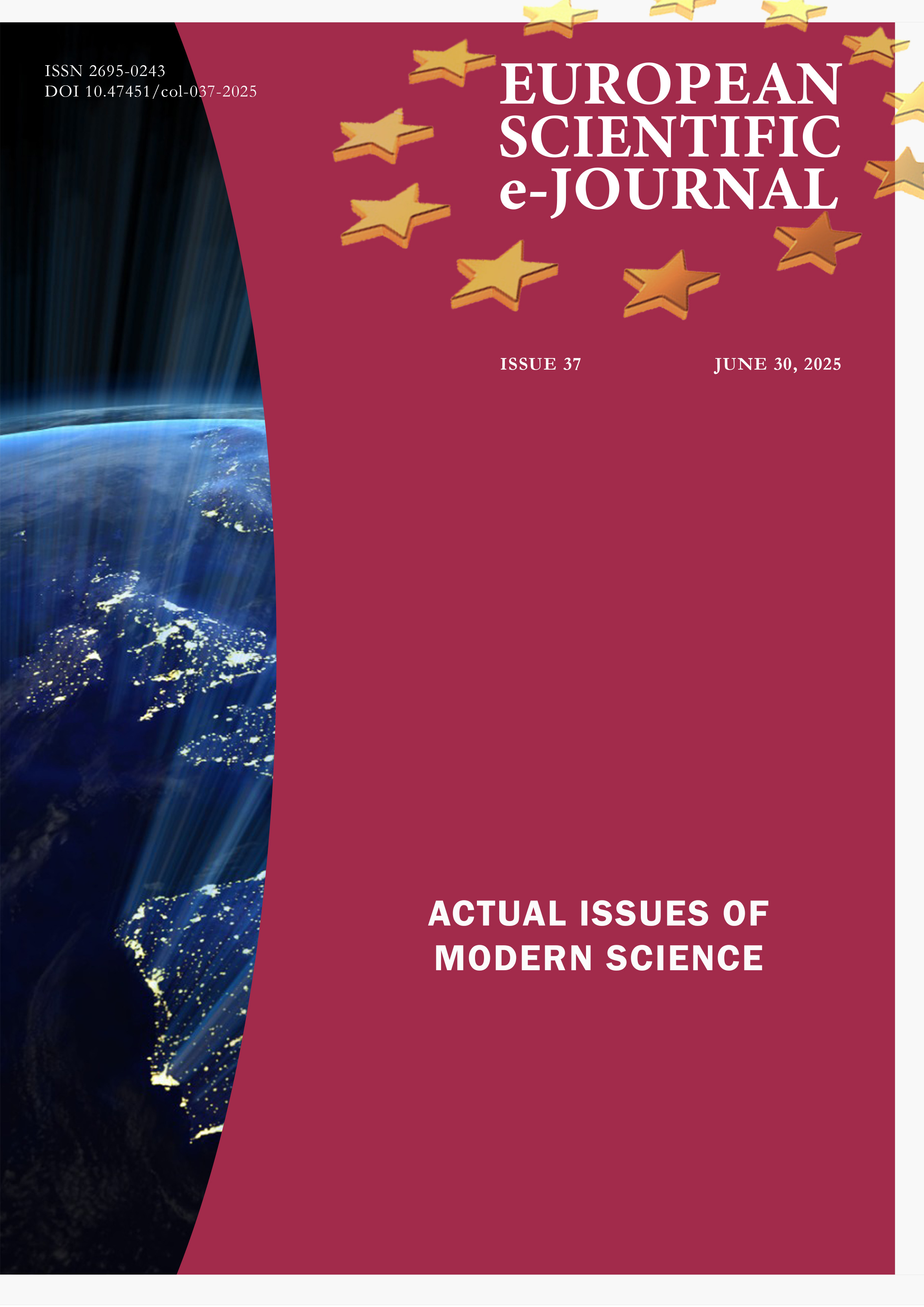Study of Thermal Rectification in a Bi-Material with Interfacial Inhomogeneities
DOI:
https://doi.org/10.47451/phy2025-07-01Keywords:
bi-material, interfacial inhomogeneities, thermal conductivity, thermal rectificationAbstract
Thermal rectification is a phenomenon of heat exchange that allows heat to be transferred in one direction to a lesser extent than in the other. The study of this process enables the control of temperature, energy conversion, and the creation of potentially new materials. Studies of the thermal rectification effect using nanofiber compounds are known in the literature, in which the heat flow causes different heat transfer in both directions by changing the operating temperature, and thus, in one direction, the connected structure plays the role of a dielectric, in the other — a conductor. In this article, the phenomenon of thermal rectification is studied based on a model of thermos-elastic behaviour of a bi-material with interfacial inhomogeneities. It is assumed that the interfacial inhomogeneities are filled with some substance and are characterised by a given thermal conductivity coefficient. It is demonstrated that inhomogeneities along the interfacial line of the bi-material result in varying heat transfer depending on the direction of the heat flow and the properties of the bi-material components. The phenomenon of thermal rectification for such a model consists in increasing the difference between the values of effective thermal resistance for two opposite directions of heat flow. It has been established that the lower the thermal conductivity of the inhomogeneities and the greater the density of their location, the more pronounced the phenomenon of thermal rectification becomes.
Downloads
References
Chumak, K. A., & Martynyak, R. M. (2012). Thermal rectification between two thermoelastic solids with aperiodic array of rough zones at the interface. International Journal of Heat and Mass Transfer, 55, 5603–5608.
Ito, K., Nishikawa, K., Iizuka, H., & Toshiyoshi, H. (2014). Experimental investigation of radiative thermal rectifier using vanadium dioxide. Applied Physics Letters, 105, 253503. https://doi.org/10.1063/1.4905132
Martynyak, R. M., & Serednytska, K. I. (2017). Contact Problems of Thermoelasticity for Interface Cracks in Bimaterials. Lviv: Publishing House “Rastr-7”.
Nobakht, A. Y., Gandomi, Y. A., Wang, J., Bowman, M., Marable, D. H., Garrison, B., Kim, D., & Shin, S. (2018). Thermal rectification via asymmetric structural defects in graphene. Carbon, 132, 565–572. https://doi.org/10.1016/j.carbon.2018.02.087
Roberts, N. A., & Walker, D. G. (2011). A review of thermal rectification observations and models in solidmaterials. International Journal of Thermal Sciences, 50, 5. 648-662. https://doi.org/10.1016/j.ijthermalsci.2010.12.004
Serednytska, K., Martynyak, R., & Chumak, K. (2019) The thermoelastic state of a bi-material with an open gas-filled interface crack. Journal of Theoretical and Applied Mechanics, 57, 2, 331–341. https://doi.org/10.15632/jtam-pl/104587
Shrestha, R., Luan, Y., Luo, X., Shin, S., Zhang, T., Smith, P., Wei Gong, Bockstaller, M., Tengfei Luo, Chen, R., Hippalgaonkar, K., & Sheng Shen. (2020). Dual-mode solid-state thermal rectification. Nature Communications, 11, 4346. https://doi.org/10.1038/s41467-020-18212-2
Wang, H., Hu, S., Takahashi, K., Zhang, X., Takamatsu, H., & Chen, J. (2017). Experimental study of thermal rectification in suspended monolayer graphene. Nature Communications, 8, 15843. https://www.nature.com/articles/ncomms15843
Wang, Y., Hu, J., Qiu, B., Chen, Y., & Ruan, X. (2014). Phonon lateral confinement enables thermal rectification in asymmetric single-material nanostructures. Nano Letters, 14, 592–596. https://pubs.acs.org/doi/abs/10.1021/nl403773f
Ye, Z. Q., & Cao, B. Y. (2017). Thermal rectification at the bi-material nanocontact interface. Nanoscale, 9, 11480–11487.
Published
Issue
Section
License
Copyright (c) 2025 European Scientific e-Journal

This work is licensed under a Creative Commons Attribution 4.0 International License.
The European Scientific e-Journal (ESEJ) is an open access journal. Articles are available free of charge as PDF files on the website of the European Institute for Innovation Development. PDF files can be previewed with Acrobat Reader from www.adobe.com.
All articles of the “Tuculart Student Scientific” are published under a Creative Commons Attribution 4.0 Generic (CC BY 4.0) International license.
According to the Creative Commons Attribution 4.0 Generic (CC BY 4.0) International license, the users are free to Share — copy and redistribute the material in any medium or format for any purpose, even commercially (the licensor cannot revoke these freedoms as long as you follow the license terms).
Under the following terms:
- Attribution — You must give appropriate credit, provide a link to the license, and indicate if changes were made. You may do so in any reasonable manner, but not in any way that suggests the licensor endorses you or your use.
- No additional restrictions — You may not apply legal terms or technological measures that legally restrict others from doing anything the license permits.


